Graham Reid | | 10 min read
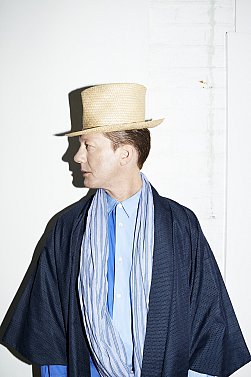
Nathan Haines sits on the deck at the back of The Long Room on Auckland's Ponsonby Rd and seems very relaxed over a beer.
These are good days for multi-instrumentalist, singer and producer Haines. He's back in New Zealand from London for a few months over summer, he has an excellent new album 5 A Day to talk about, he's getting plenty of work in London where he lives with his DJ wife Jaimie . . .
Oh and she – “10 years younger than me and a party girl”, he laughs – is about to have their first baby. It's a boy.
“Zoot, he's always been Zoot, after Zoot Sims,” he laughs. “The saxophone player in The Muppets was Zoot and there's that track on the album Zoot Allure”.
It would be fair to say Haines and I go way back, I recall going over the family home in Beachhaven when Nathan and his guitar playing brother Joel were in the Second Generation band with their father, bassist Kevin. The boys were in their mid teens and they were already making a name for themselves in the local jazz scene.
Nathan was playing a lot of flute back then but, being of his generation, he grew into sax and the hip-hop he heard around him.
He became a regular on the Auckland club circuit, pushing the boundaries – or more correctly, ignoring them – between jazz and hip-hop. He worked with rappers and turntablists but also played some straight-ahead jazz when the occasion demanded.
And then the albums started to come: first up was the acclaimed Shift Left 20 years ago, then the Soundkilla Sessions Vol 1 (there was no Vol 2, to my knowledge), Sound Travels and his big breakthrough with Squire For Hire which featured the exceptional vocals of American jazz and soul singer Marlena Shaw, then in her 60s.
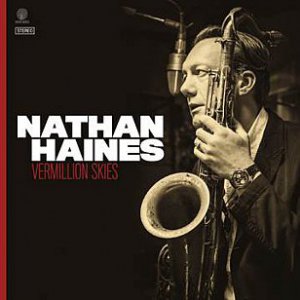 The details of Haines' private life
have been well canvassed previously and he has been candid about
that, so it's good to see him so well, happy and less gaunt than he
once was.
The details of Haines' private life
have been well canvassed previously and he has been candid about
that, so it's good to see him so well, happy and less gaunt than he
once was.
He's smart, gifted, well connected (he mentions having lunch with top chef Peter Gordon the previous week when Shift Left and the Soundkilla Sessions were on repeat play) and over in London he and Jaimie are DJs at the toney and uber-hip restaurant-cum-lounge The Chiltern Firehouse. He's good friends with ex-pat New Zealander Michael Watt who owns Ronnie Scotts where he plays regularly, and . . .
Yes, he did the Music for Cocktail Lovers album (better than many gave it credit for) and most recently two back-to-analogue albums The Poet's Embrace and Vermillion Skies which found him playing live in the studio and direct to two track. No overdubs, no second chances to fix it in the mix. They were daring albums (although the old way of doing things) and came wrapped in lovely covers – you need them on record – which alluded to classic Blue Note albums.
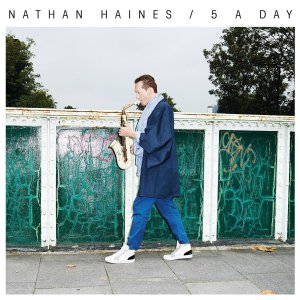 But now with 5 A Day he has moved again
to that soulful, jazz-meets-clubland music of his origins: : "Funny how
I've come back around to similar concept”.
But now with 5 A Day he has moved again
to that soulful, jazz-meets-clubland music of his origins: : "Funny how
I've come back around to similar concept”.
His wife was a big driver for the album, he says. Much as she liked what he calls his “jazz albums” she wanted something she could play out DJing.
“So I wanted a record you put on and enjoy but which also has places which would satisfy the musicians and appeal to people who bought my jazz records,” he says.
"The first thing [longtime friend and producer] Mike Patto and I spoke about was the vocals, they needed to be group vocals like Chic or Sergio Mendez, the double vocals. Apart from Tama Waipara's song Wait & See they are all very three, four or five people singing.
“We also wanted no jazz-funk on the record, we spent about four months where we'd come up with ideas and then thought, 'No, it's too jazz-funk'.
“We're very aware we wanted to make something that wasn't 'jazz-funk'. I have the word funky,” he laughs. “In the Bootsy Collins sense it great. But we wanted this to be a black record – and we're both white – because we wanted that tradition of group vocals, like Sly Stone.
“They were a collective and we are too in a sense, Mike and I, singer Kevin Mark Trail who lives here now who has his own album which I helped on, Tama Waipara who is incredible. Vanessa Freeman who is Mike's partner.
“It was just to try and simplify an idea. Just executing it simply and wrap it up in a nice sounding package. The guy who did some of the beats is Marc Mac from 4Hero from about 10 years ago. His beats are amazing, very much in the proper hip-hop mould of international production.
“Simple doesn't mean simplifying or dumbing down the music, it's actually the opposite.
“Even with Coltrane playing that ridiculously fast stuff, he just went, 'Hold on, if the band just vamps then I can just do all the complicated shit over the top'. Same as what Miles and so many others did. Gives you more space to play in, more like a head-nod thing too.”
Haines' musical references and influences are wide and deep these days as befits a man in his early 40s. But he's quick to admit that his two “jazz albums” came about because he had to re-school himself in the idiom after years of simply doing it intuitively.
“When I first met you and I was young and made records like Shift Left I had a knowledge of music but I relied on my ear for a lot of stuff. It was great because it helped me make records which were more about feeling than going to university and studying.
“Then I got to a certain point where I had to grapple with music. I started lecturing at university and I had these people in their early 20s and we'd be playing through those Jamie Aebersold charts, pieces like All The Things You Are or something, and they'd go, 'What were you doing there?'
“I realised they had a good knowledge of music, some of them can't play but they know all the scales, so I thought I had to start justifying what I played.
“So on our honeymoon I had a month in the south of France and I didn't have to do anything so I got my saxophone and really got down to it. I did a lot of study of Coltrane. There are a couple of great jazz websites, and I got down to all the building blocks of his jazz is put together . . . and it was this epiphany.
“There was just me, my internet connection and my horn but there was a breakthrough.
“I'd managed to make records and have people come to my gigs, but this was a personal thing, I wanted to go further as a musician. So after I gained all this knowledge I was talking to Phil Howling [at Warner NZ] and said I wanted to make a proper jazz record, all playing at the same time, no overdubs.
“I'd been talking about this with Mike over many years too.
“So Phil gave me the money and we flew Mike down and it was all done in one day.
“Also I'd had some negative press to an album i'd put out before that, Heaven and Earth. And I thought because I was going back to London this was my parting shot.
“It totally reinvigorated my career, particularly in the UK but also in Japan. Warners in Germany released it so it was 'Wow'. This was very heartfelt and genuine, it wasn't trying to be something but was just a genuine expression where I was at that time.
“It was great to do it . . . but I also figured out that not many people are buying jazz records so if I'm going to have career then it's not going to be doing that.”
That said lessons learned on those two albums in terms of production have opened his ears and ideas, although he's aware of the new musical and business context in which music is released these days.
Our conversation turns to production and how a generation has been attuned to the low sonic value of streams and downloads, and even compressed CDs. We agree there's no great vinyl revival but there are incrementally good signs in that quarter.
“Producers have really pushed to the edge in the past decade or so, the records are so loud now. You notice how loud my record is? Because we have to compete. It all started with drum and bass, so for kids today if the music doesn't sound like that there's no excitement for them.
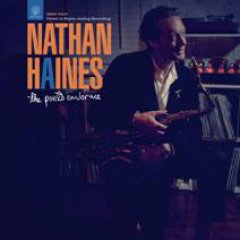 “Music is also designed to be
listened to on crappy systems, whereas if you listen to a jazz record
like that it just loses everything
“Music is also designed to be
listened to on crappy systems, whereas if you listen to a jazz record
like that it just loses everything
“Mike produced my last two in a very analogue domain, meanwhile we've been listening to all of this other music . . . and so this new one has to sound as good as a Daft Punk record, or a Pharrell, that's our competition.
“From a technical aspect it's got to be that loud, have that impact, the sparkly thing
“So it's been a great journey to make The Poet's Embrace and Vermillion Skies in the analogue domain, that freed our minds.
“So now it's time to get back to that richer sound with my melodic knowledge. Also Mike and I have, as separate producers, more experience . . .so we engineered and mixed the album ourselves. “We took back the power. This is my 10th record and mMike has been doing incredible stuff and lots of other projects. We actually hired someone to mix and we got them back and were very disappointed. It wasn't that he didn't do a good job, it was more that we'd invested so much time and effort into the making of it, we just thought we should just mix it ourselves.”
The new album 5 A Day is an extraordinary album in that it make reference to great black soul – specifically black British artists like Sade – with subtle aural connections to Sly Stone and Chic, but also the smooth-cruise of Steely Dan.
“There's a bit of a UK soul resurgence going on in America. I know the manager of Incognito, they did a tour over there and got something in the Billboard top 10. It's been 20 years since the likes of Sade, Incognito and those people, so it's a great time to be showing the Americans what Britain can do.
“It's been 20 years since Soul II Soul -- Jazzie's a friend and has been for a long time -- and there are really great people in that scene. That British soul scene I so different, it's really . . . soulful,” he laughs.
“That's where we're coming from, the black British soul end.
“It's up to us as musicians to reclaim the territory which has been dominated by the changes in the record industry. It's great what people like Daft Punk and Pharrell have done, which is reclaiming part of the tradition which has been lost in popular music.
“I'm at the other end of the scale from the consumer because I am deeply involved in music itself, but we were very aware this time of making a record that people wanted to listen to.”
Haines and his wife – and soon-to-be Zoot – are back in New Zealand until Easter next year. Their stuff in London is in storage and this is a time to step back: “I'm keeping things open-ended but I know people have already responded well to the few tracks I've put to them”.
He's hardly doing nothing while he is back in his other home: “We want to around our families, I want to do some great gigs over summer and it's just a time to rethink everything.”
The music industry has changed around him, he's been approached the American label Storyville to produce a record with Marlena Shaw whom he still plays with (“a week earlier in the year and I've got a week with her at Ronnie Scotts in May”) and he needs to play catch-up on the world of management (he doesn't have a manager) and social media. Although he's mildly cynical about that, from experience at the hipper-than-though Chiltern Firehouse.
“At the Chiltern, Lindsay Lohan was in every other night. Rita Ora was there and is a good friend of Jaimie. But these people come in with an entourage of maybe 20 people, very fashionable people, and in the old days everyone would be drinking and talking.
“But now they come in, sit down and then they'll all be on their devices tweeting about how they are the Chiltern with Rita Ora or whatever.
“Is that where we've come as a civilisation? They are not even engaging with each other, they are engaging with the public about being in a social situation which they are actually missing out on because of that addiction.
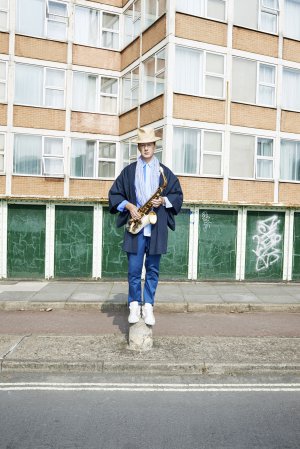 “Personally I'd just love to pay
someone to tweet for me," he laughs.
“Personally I'd just love to pay
someone to tweet for me," he laughs.
"I know that's what some of these pop artists do, and you could just do one or two a day.
“I don't twitter.
"I'm at a point in my life where I'd like not to do any of it because it takes an enormous amount of time, and it takes away time from doing things like reading books and old fashioned analogue pursuits.”
And Haines' head is elsewhere anyway.
He's a musician who has worked at his art for more than two decades, has done creditable production work (most recently on Kevin Field's album Field of Vision, and also Jennifer Zea's album), has made some exceptional albums of his own – notably Shift Left which he correctly says anticipated a change in music – and now looks to the bigger picture for 5 A Day.
“Personally I think a label like Blue Note needs this record. And I hope that doesn't sound arrogant. Because I think we've done something very special and I think it captures something that the world is ready to hear. If you put this in an article people are going to say, 'Who does he think he is?”
“But it's beyond that, because I think how we made the record: We trusted the universe, we had fun, we threw al the rules out the window, we just had a completely different attitude . . . and our references are massively wide.
“We let all of the singers get involved. There was such a family there.
“Labels like Blue Note need records like this, not some insipid washed-out sound. This is a record by a bunch of people who love music, love hanging out, love the camaraderie of it, love soul music. We love black music and jazz.
“That's what I'll be working towards in the next month, to get it into the ears of the right people,” says the man about to be a first-time dad.
Yes, these days are good for Nathan Haines. As they should be. He deserves it.
However you chose to read this comment (and one day Zoot might), it's true on professional, musical and personal levels.
“I feel like I'm standing on this precipice . . . and ready to go to the next level.”
Nathan Haine's album 5 A Day is available November 28 and is being launched on December 4 in Auckland at the Tuning Fork. There will be a limited edition vinyl pressing.


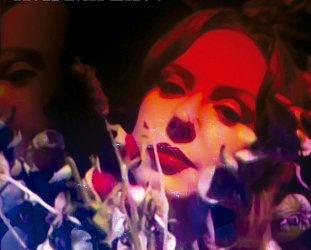


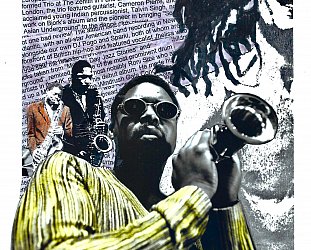
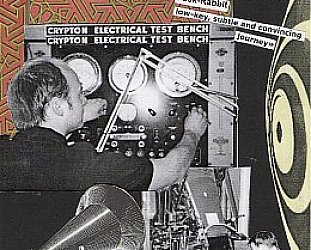
Dirk van Haarlem - Nov 23, 2014
Graham- loved your wide-ranging and thought provoking Nathan Haines interview. I'm going back to savour it because you cover a lot of ground.
SaveI've been following his career since back in the Cause Celebre days days in Auckland, and like you, am thrilled to see that he's in such a good space right now (very much looking forward to hearing the new album)
I caught up with Nathan briefly after a small gig at The Thistle Inn, Wellington a couple of years ago- promoting the Poets Embrace album.
He signed my (vinyl) copy of the album- a real gentleman, who I believe will continue to produce quality music.
Looking forward to some Summer gigs.
post a comment